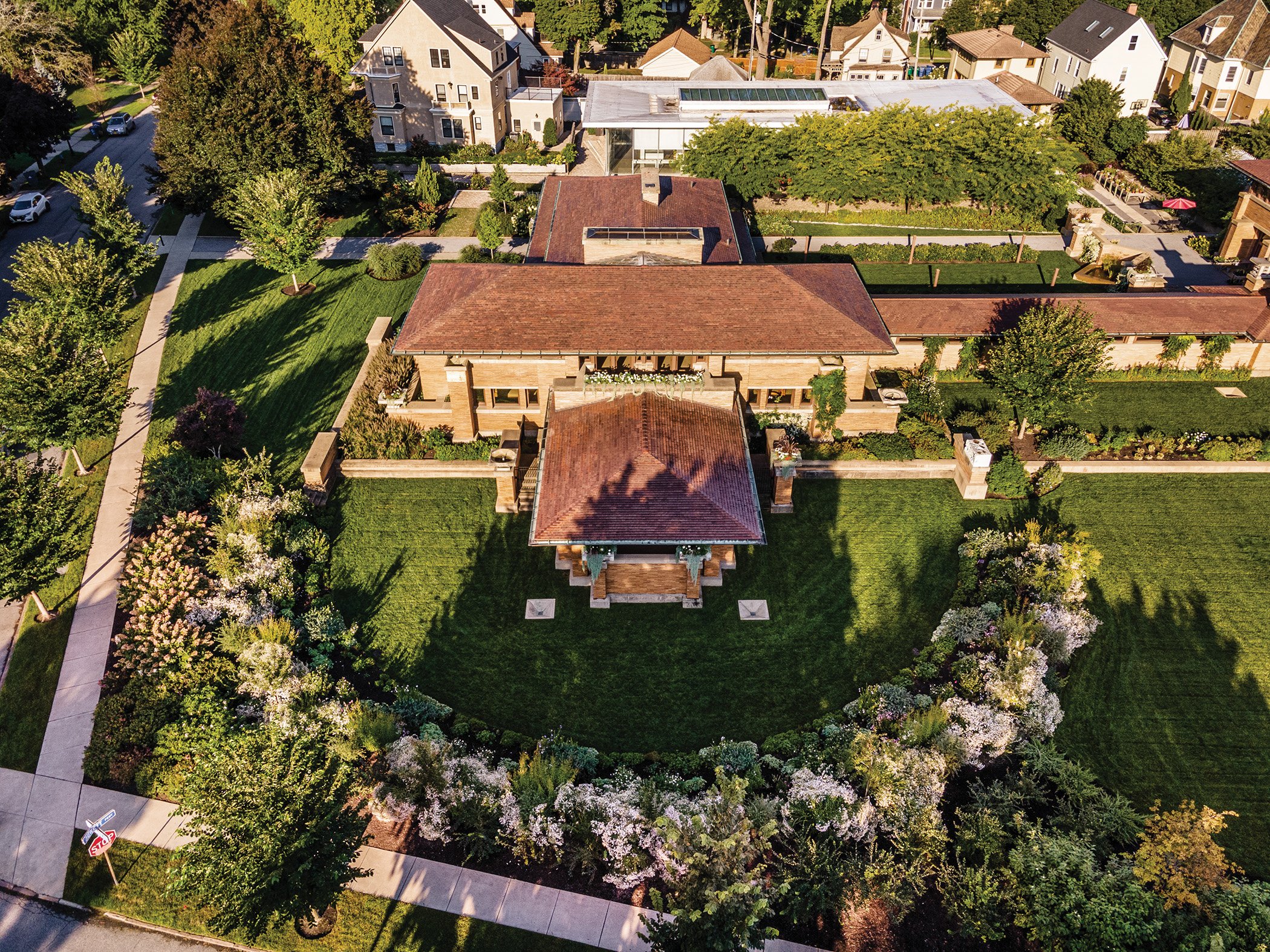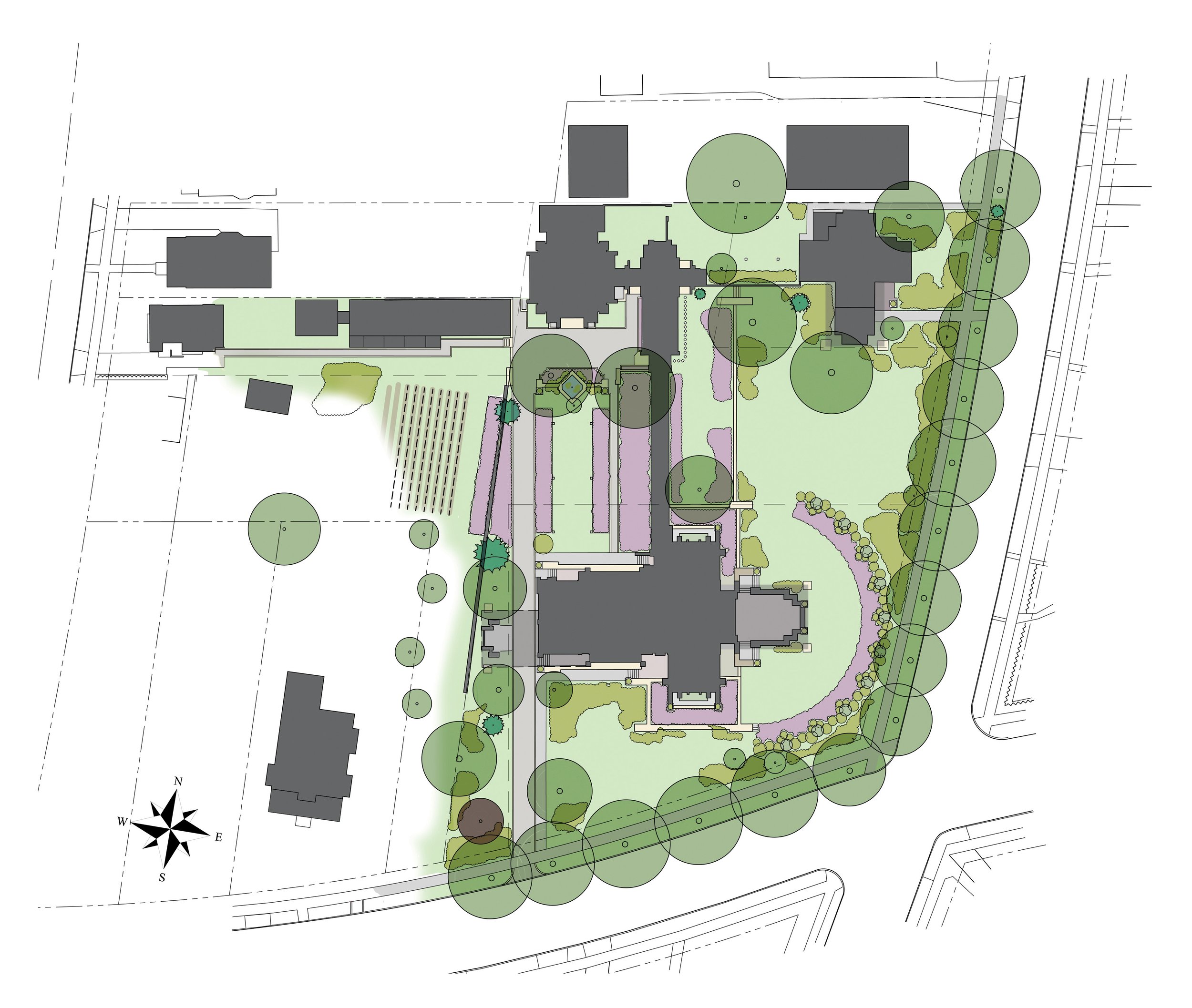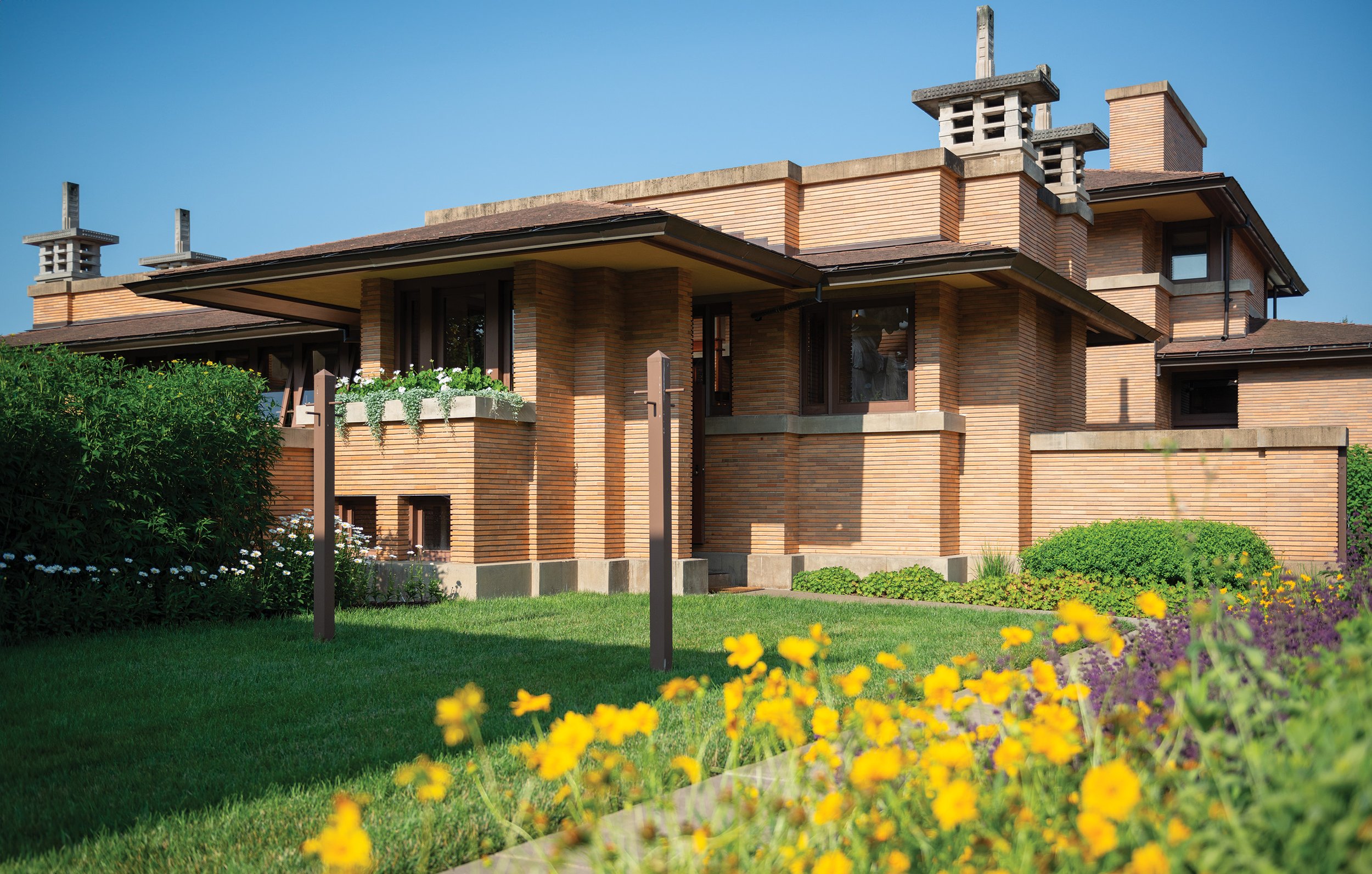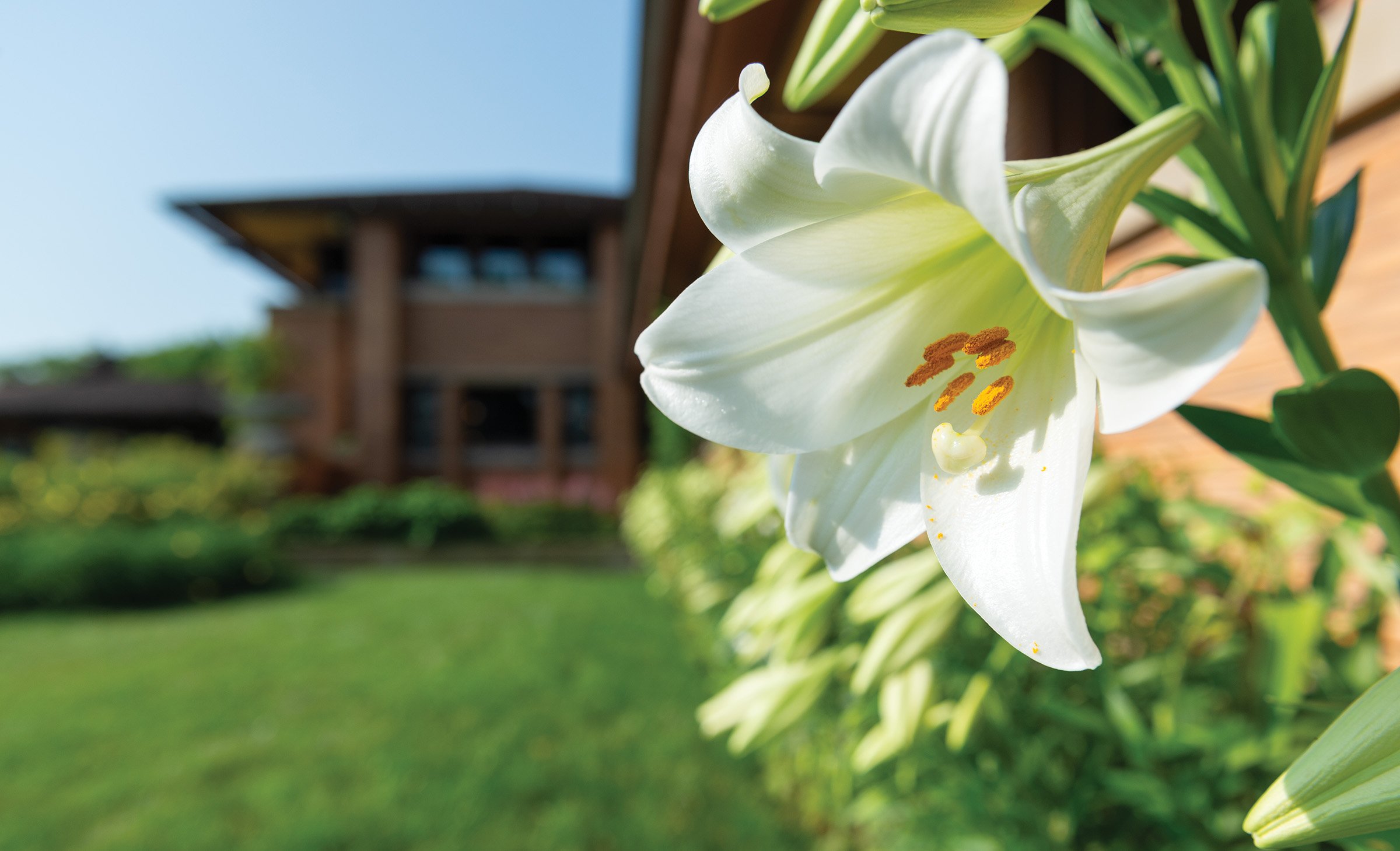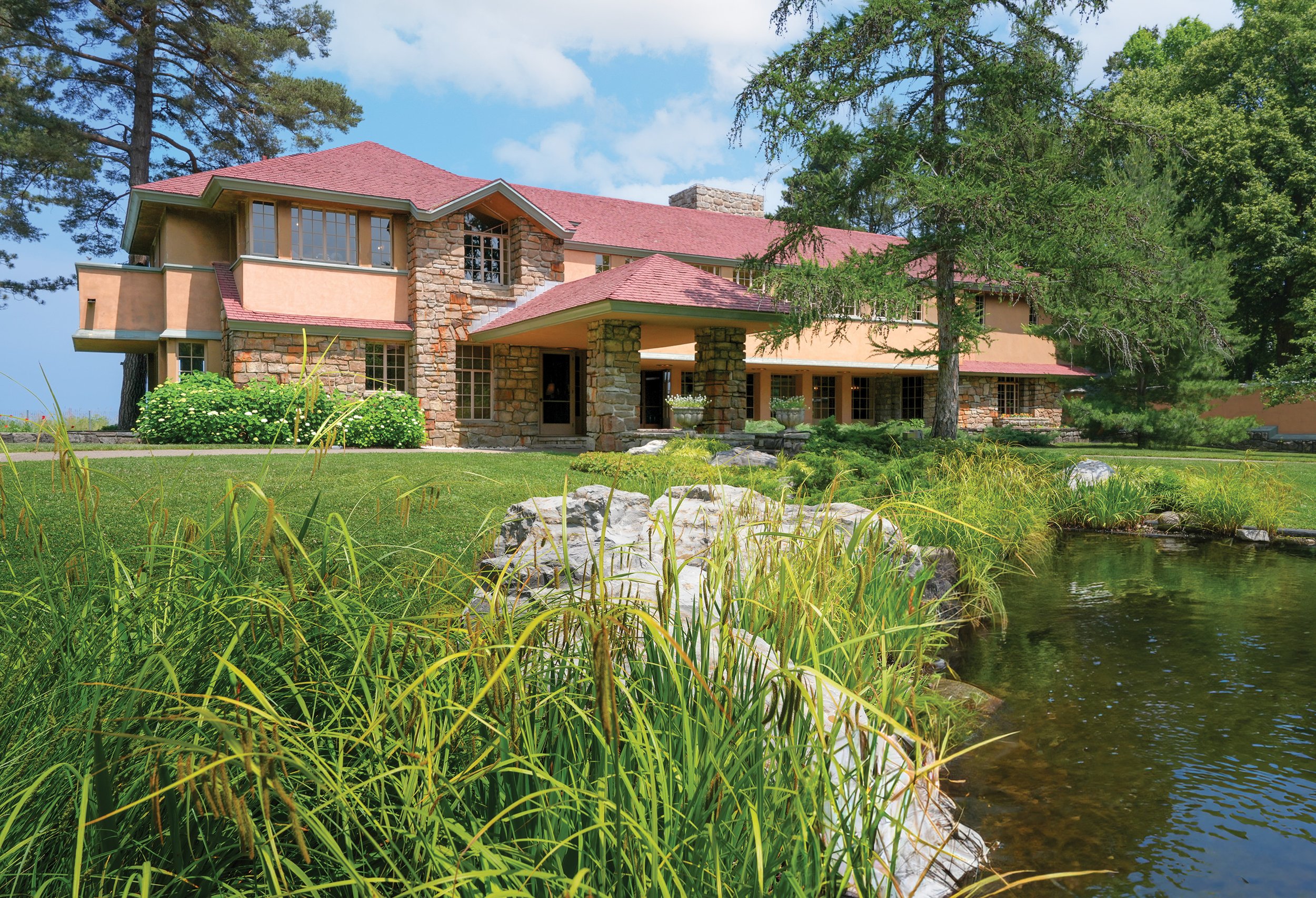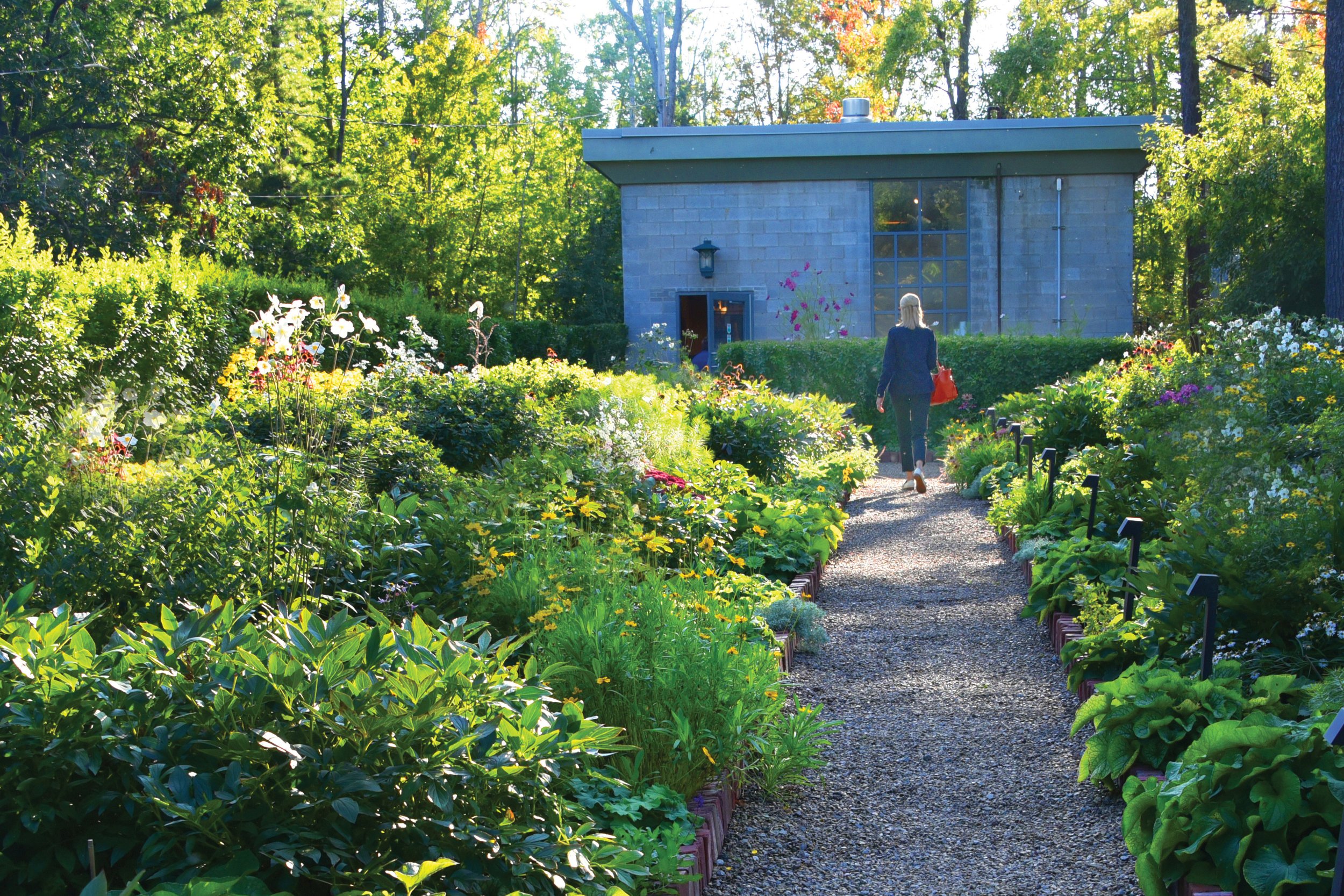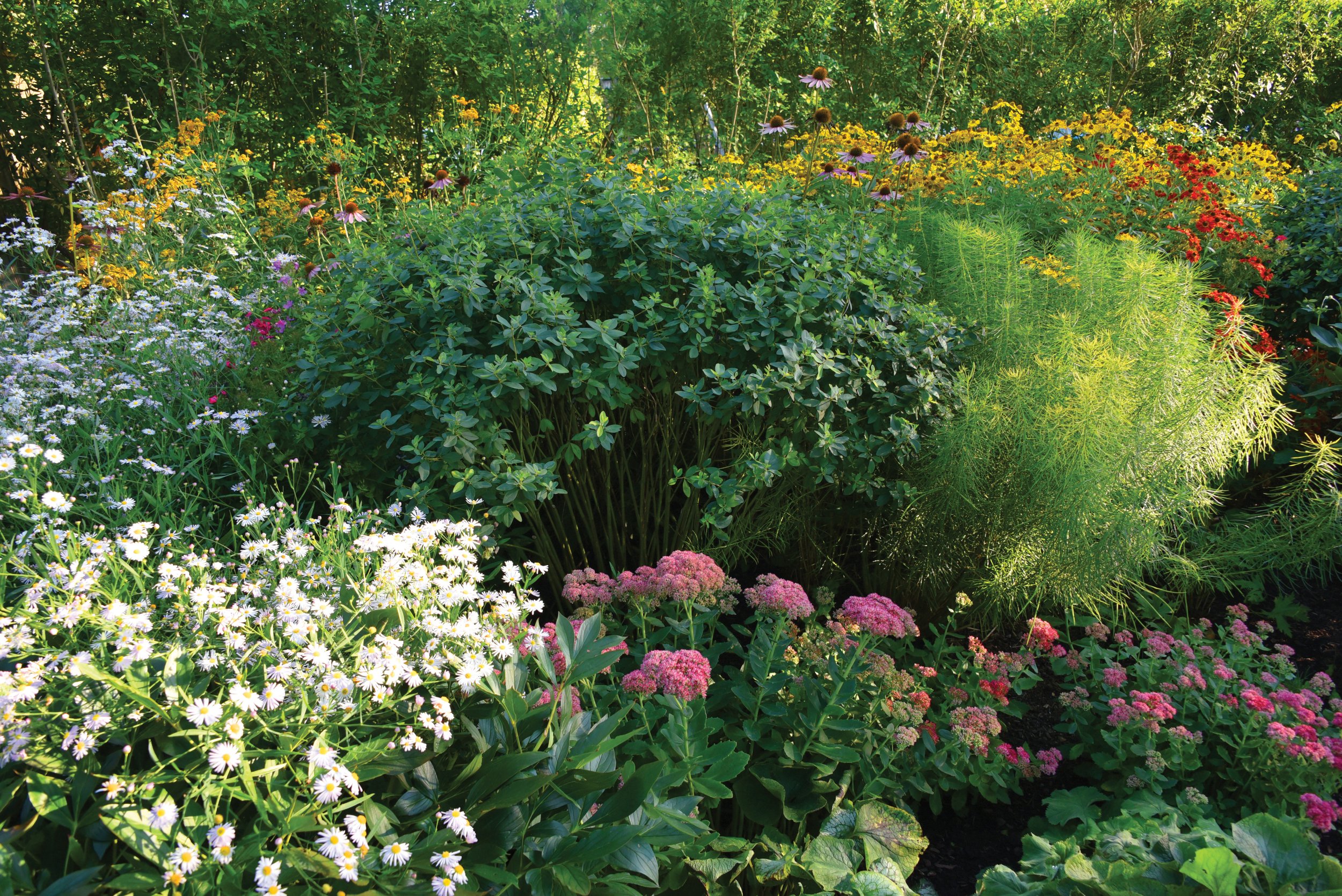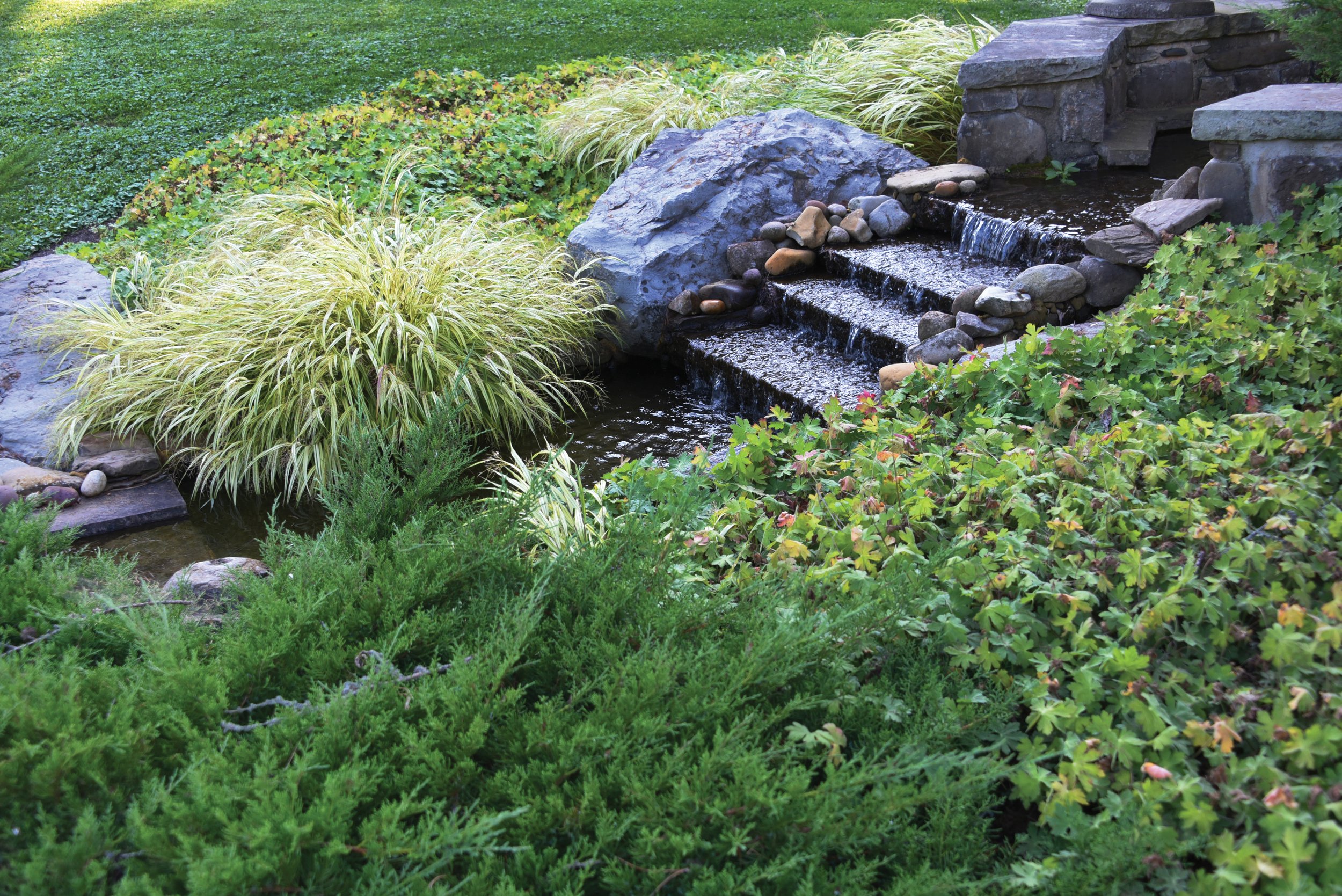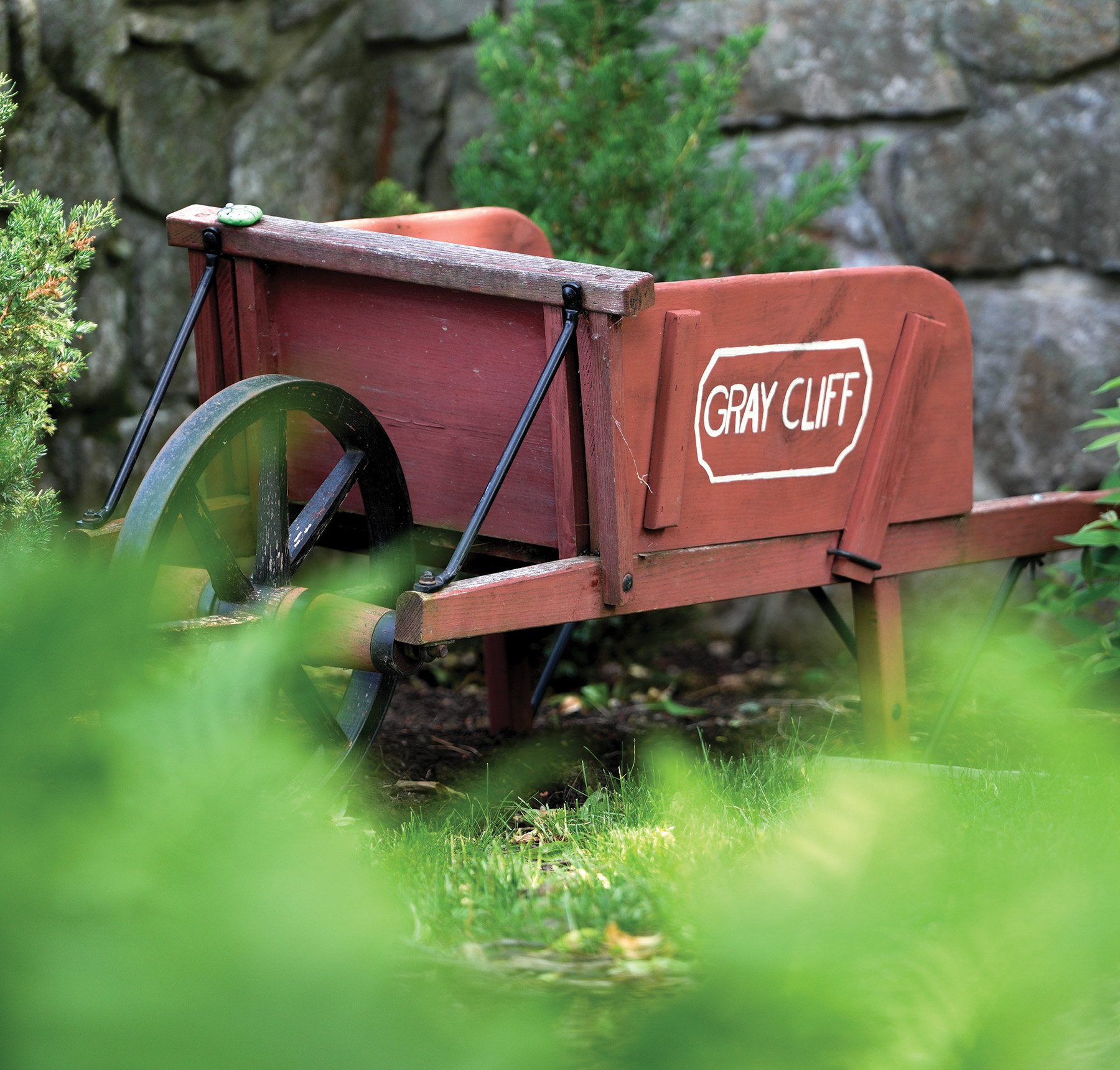The Women Behind Two Historic Buffalo Gardens
TWO HOMES BUILT BY FRANK LLOYD WRIGHT FOR BUFFALO’S MARTIN FAMILY HAVE BEEN REVITALIZED WITH GARDENS THAT COMPLEMENT THE STRUCTURES AND RE-CREATE THEIR ORIGINAL LANDSCAPE ARCHITECTURE, BASED ON THE EFFORTS OF TWO REMARKABLE WOMEN.
The friendship between Isabelle Martin and renowned landscape architect Ellen Biddle Shipman all began with Darwin Martin. Born in Bouckville, New York, Darwin left school at age 13 to work with the Larkin Company in Buffalo.
Despite his minimal formal education, he developed a card ledger system for Larkin and moved up in the company, eventually amassing considerable wealth. He married Isabelle Reidpath in 1889, and by 1904, they had engaged America’s foremost architect, Frank Lloyd Wright, to build their family home, a masterpiece of 20th century architecture, and later, Graycliff, their summer escape on the shores of Lake Erie.
While Darwin primarily worked with Wright to plan and design the buildings for their Buffalo property, he had Isabelle’s wishes in mind when it came time to landscape the estate — she was an avid gardener and lover of flowers, despite a vision impairment.
The entire property was adorned with trees and plantings, sourced locally and from around the world. Because she wanted a greenhouse on the property, but Wright didn’t produce drawings for it, Darwin instead had him design a heated conservatory for Isabelle inside the house, with a watering system so that she could enjoy her favorite flowers and tropical plants year-round, including her beloved orchids. Isabelle’s talent for arranging flowers was renowned and she customarily sent visitors home with orchids or flowers picked from her gardens.
The Martins were quite specific about the plantings on the property, including the abundant wisteria that was also replicated as a pattern in the Wright-designed fireplace and dining room windows.
The landscaping was integrated with the buildings to merge the indoors with the natural world that both Wright and the Martins loved. There were English flower gardens for picking, peonies, hydrangeas, clematis and the graceful Silver Falls dichondra in window boxes. Rows of rose bushes were planted so that the Martins’ daughter Dorothy could walk down the aisle at her wedding in 1922. The “flora circle,” a long curve of more than 20,000 colorful flowers and plants, was designed so that something was always blooming during the growing season. The Martins liked to “plant thick and then thin,” as archival photos document and which the revitalization of the Martin House gardens re-created.
Following the completion of a Cultural Landscape Report in 2016, and as part of an ambitious effort begun in 1992 to restore the Martin House estate to its original glory, Bayer Landscape began the revitalization of the gardens and grounds, completed in 2019.
Visitors today can still admire many of the same flowers and plantings, along with the beautiful and massive copper beach tree in front of the main house.
Twenty years after the Martins completed their primary home, the couple asked
Wright to also design their summer home on the shores of Lake Erie.
Constructed between 1927 and 1931, on 8.5 acres and 70 feet above the lake, Graycliff was Isabelle’s dream for a family ”cottage.” Wright designed the initial landscaping plan in addition to the prairie-style home itself, but it was rather basic — he primarily specified evergreens, because he preferred form and shape.
Isabelle loved color and wanted a natural, “wild” landscape for her summer idyll.
Enter Ellen Shipman, by that time one of America’s most sought-after garden designers for wealthy families and one of the first women to break into what was a mostly male occupation. Shipman was heavily influenced by the American Colonial Revival movement and taught herself how to create bountiful gardens that combined native plants with old-fashioned flowers, sculptural ornaments and natural dirt paths. She used plantings as if she “were painting pictures as an artist.” While Wright’s intent was a water theme around the house, Shipman’s work was based on Gertrude Jekyll’s painterly landscaping style, with brilliant colors, picking gardens, natural grasses and shade trees.
After meeting the Martins in October 1929, Shipman reworked Wright’s initial plan in just a month and designed prolific perennial gardens for Graycliff featuring lush, intricate flower beds and her signature picking borders for swaths of color and texture. Native plants and trees helped to unify the relationship between Wright’s architecture and the natural landscape surrounding the stony lakefront property, once again integrating the indoor and outdoor spaces through intentional design. Shipman’s plan demonstrated her expertise in horticulture as well as her artistic eye for envisioning how plants would grow over time to occupy space. For Isabelle, with her talent and artistry for flower arranging and her shared appreciation of the natural world and the renewing pleasures of gardening, their working relationship flourished and became a friendship.
The resulting gardens all had different, seasonal bloom cycles. Peonies, yarrow, lady’s mantle, dogwood, coneflowers, bugbane, black-eyed Susans, sedum, zigzag goldenrods, phlox, geraniums, wisteria and a variety of viburnums — just some of the property’s flowers — provided brilliant color. An orchard with apple trees, a large vegetable garden plus clusters of trees were added to provide shade.
After the Martins died, Graycliff was sold to the Piarist Fathers, an order of the Roman Catholic church, who added buildings to the property that obscured Wright’s vision and the lake views for almost 50 years. When it looked like a developer would buy the property in 1997, the Graycliff Conservancy was born and began fundraising for an extensive restoration of the original property from 1931, including many of Isabelle’s beloved and the original Shipman gardens, all available for visitors to tour today.



